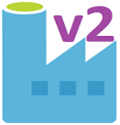ADF or SSIS, That Is the Question
Microsoft introduced Azure Data Factory (ADF) in 2015 to handle a specific scenario: tumbling window loads for Hadoop and other big data systems for internal MS usage. Then a need arose for a PaaS public-facing data integration platform which led to an interesting dilemma: SSIS or something else? Since SSIS wasn’t designed to scale out in the cloud, ADF rose to the challenge. I could argue that a better approach would have been migrating the SSIS design experience to the cloud to retain existing skills and make thousands of BI developers feel at home, as Microsoft did with SQL Server Database Engine and SSAS, but it’s a moot point now. So, ADF was incorrectly positioned as “SSIS for the Cloud” and unfortunately once that message made it out there was a messaging problem that Microsoft has been fighting ever since. Like Azure ML, on the glory road to the cloud things that were difficult with SSIS (installation, projects, deployment) became simple, and things that were simple became difficult. Naturally, Microsoft took a lot of criticism from the customers and community, including from your humble correspondent. ADF, or course, has nothing to do with SSIS, thus leaving many data integration practitioners with a difficult choice: should you take the risk and take the road less traveled with ADF, or continue with the tried-and-true SSIS for data integration on Azure?
To Microsoft’s credits, ADF v2 has made significant enhancements in features, usability, and maintainability. There is an also a “lift and shift” option to run SSIS inside ADF but since this architecture requires a VM, I consider it a narrow case scenario, such as when you need to extend ADF with SSIS features that it doesn’t have. Otherwise, why would you start new development with SSIS hosted under ADF, if you could provision and license the VM yourself and have full control over it?
SSIS has been evolving for 13 years (or 20 years if you count DTS), and it has a rich ecosystem of add-ons to tackle challenging data integration needs. ADF, on the other hand, has a humble 3-year history. It would probably take Microsoft another decade to get ADF where SSIS is today. Here are some limitations that you’ll probably run into:
- ADF supports a limited set of connectors (even Excel is not on the list)
- There is practically no extensibility, except custom activities (require .NET coding).
- The ADF Execute Pipeline activity doesn’t support dynamic content for the pipeline name. This means that you can’t dynamically bind the activity to execute pipelines (an ADF pipeline fulfills the same role as a package in the SSIS world) from a list stored in a database table. Although this sounds trivial, it won’t let you implement a comprehensive ETL framework. An ETL framework is important from an architectural standpoint as any self-respected data integration developer would agree. For instance, our SSIS ETL framework complements the SSIS catalog with features that SSIS doesn’t have, such as declarative parallelism, restartability, actual vs target duration monitoring, logging, and others that I discussed in my “Is ETL (E)ating (T)hou (L)ive?” newsletter. Unfortunately, it’s not possible to migrate or implement such frameworks in ADF because of the above-mentioned Execute Pipeline restriction.
- Continuing on limitations, ADF lags considerably behind SSIS in the areas of troubleshooting and monitoring. For example, if you misconfigure a previous step, you’ll get “Activity failed because an inner activity failed” during debugging with no way to troubleshoot this. This took hours to troubleshoot on a recent project! Of course, ADF is a cloud technology so I hope the momentum behind it continues and the feature gap narrows to bring ADF on a par with SSIS.
As of now, consider Azure Data Factory for pure PaaS solutions (sometimes, this is mandated by upper management and you don’t have much latitude). ADF would be also a good choice when your data integration loads need to scale, such as when you run a lot of ETL jobs that might be difficult to scale on a VM running SSIS. If you decide for ADF, simplify your data integration pipeline as much as possible. Strongly consider the ELT pattern instead of ETL (see that newsletter again if you don’t know what that means). Although all Microsoft cloud architecture diagrams prominently show ADF, my personal preference for cloud data integration projects is still SSIS on a VM with the Azure Feature Pack.
I’d love to hear your feedback.





